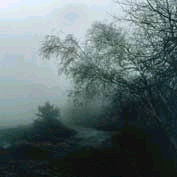Nature Conservancy: Saving the Earth's Last Great Places

Photograph of the Shawangunk Mountains in New York, by Annie Leibovitz
In observance of the Conservancy's 50th anniversary, 12 renowned photographers including Annie Leibovitz and William Wegman capture the rich and complex splendor of some of the "Last Great Places." The exhibition is currently on display at The Houston Museum of Science, and moves from there to Seattle and then Atlanta.Feature
Self-Published Children’s Book is No Stranger to Bestseller Lists
Authors Make Snowmen and Align with Charities to Bring Attention to Kids, Causes, and their Unique Photographic Fantasy
It's been twenty years since Carl Sams and Jean Stoick began attracting, feeding, and photographing the wildlife on their woodland property in Michigan. In time, they became so familiar with a family of whitetail deer that they could walk right up to them in the woods. With a successful wildlife photography business and one published book of their photographs, they decided to create a "deer book" from over 60,000 pictures taken of "their" deer. It took two months to narrow the choices down to 2,000 slides, and they still needed to get it down to 140 images. At this point Carl said, "Jeannie, you know we have to finish our book sometime this year, not just look at the pictures."Jeannie was stuck on two special images: one showed a deer eyeing a snowman's carrot nose, and another depicted a chickadee perched on the carrot. "It's a shame we can't use more of these winter deer pictures. We should do a children's book!" she said. "I looked at her as if she was crazy," says Carl. "She no sooner had expressed her idea when it started to snow outside. Jeannie went upstairs and began to sketch her idea for the book. I went outside and built another snowman, and Stranger in the Woods was born."
It was November 1999 when 20,000 copies of Stranger arrived, and since they'd spent all of their money on printing, Carl and Jeannie had to pack up their car and hand-deliver books to the bookstores in northern Michigan for the busy Christmas selling season. Having dedicated their book to "those who protect wild places and to the snowman that lives in every child's heart," they decided to donate a portion of every book sold to the Nature Conservancy, which has two very active chapters in the area. This also made them a hot item with local media, and they became instant local celebrities. In one week, Stranger in the Woods shot to the top of the area bestseller list.

At the same time in southern Michigan, the book was being used to raise money for the Rainbow Connection, an organization that makes wishes come true for children with life-threatening illnesses. Books were fronted to a Kiwanis club and to independent bookstores that were willing to contribute some of the proceeds. When the local Barnes & Noble and Borders stores called and asked if they could they carry the book, Sams told them "no," because it was being used as a fundraiser for children.
"I realized, 'What was I saying! I just said NO to the two largest book chains in America!' So I called back and said they could carry the book if they would match funds for the Rainbow Connection between Thanksgiving and Christmas. I didn't expect them to go for it, but they did." Between the independent bookstores, Borders statewide, and Barnes & Noble region-wide match them dollar for dollar, and in four weeks, they raised over $8,000 for the Rainbow Connection. The book has since been used in a similar fashion by the Cincinnati Children's Hospital, and $15,000 was raised. During the spring of 2000, Stranger won its first national award, a Ben Franklin Award for the Best Children's Picture Book and armed with this recognition, they began to target independent bookstores across America. They even supplied elaborate snowman displays for some stores. "We found that when we got our book placed in a good location in the store, it immediately became the best-selling item for them," says Sams. Sending out three teams to promote the book at independent booksellers' conventions across the country and advertising in their holiday catalogs began to pay off. By late October they were on the Book Sense Best Sellers list, climbing to #4 by Christmas, and they were a Book Sense 76 Best Pick for November/December of 2000. "This was pretty significant, because it put us ahead of two of the four Harry Potter books nationwide with the independents," says Sams.
Now the momentum was really building - national sales kept growing and the book made the New York Times bestseller list, reaching #2 in January 2001. In February, a schoolteacher in Michigan used Stranger in the Woods as the basis for a Snowman Festival in memory of a 2-year-old Make-A-Wish Child from Florida, whose wish was to see snow and build a snowman. The little boy had visited the previous winter and got to play and build snowmen with the school children, but had died during the summer. There were snowman activities for the whole month of February, with the whole community getting involved, and proceeds from book sales went to fund a children's library at the local hospital. Stranger was also garnering more influential awards from the likes of Early Childhood News, the International Reading Association, and National Christian Schools. Jeannie and Carl found themselves exhibiting next to Jane Goodall at the National Association for the Education of Young Children conference. "So many amazing things were happening, and with all the exposure, I decided to make a video to prove that the images in the book were true to life," says Sams.

Sams contacted his cousins Laura and Robert Sams, zoology students with an interest in doing nature programs for kids, and soon the project had a life of its own. Now there is Stranger in the Woods, "The Movie," and Stranger in the Woods, "The Soundtrack" and Laura and Robert are traveling all over the Midwest conducting workshops at elementary schools about the book-making process, and performing songs they wrote to accompany the book. The school visits have led to the creation of a Classroom Activity Guide, building on the already strong following Stranger had in the schools. "Teachers have been key to our success from the beginning," says Carl.
"Laura and Robert are amazing, talented kids," says Sams. "The book is only an eight-minute read, and even with the original footage of 'the making of Stranger in the Woods,' we had to add to the story, so they came up with some new characters." Pierre and Janine are a pair of snowdrifts who introduce viewers to their forest friends and reminisce about the time when a mysterious stranger came to visit. Both talented musicians, Laura and Robert also composed and performed the songs and do the character voices in the productions. Sams' enthusiasm for the project continues to grow, now almost three years since its inception. To date, 450,000 copies have been sold, and another 100,000 print run has been ordered. All of this from a format -- a children's book with photographic illustrations -- that the "experts" said wouldn't fly. Carl and Jeannie also take great pride in having inspired a young generation of bird-watchers and nature lovers, and the fact that Stranger in the Woods has raised over $50,000 for charities. "The gratification from helping these kids - you should see the letters we get - it all comes back to you tenfold," Carl says. And he's not finished yet. "I have to publish another kid's book. They are so much fun, because there are no rules. What's better than that?"
* * * * * * *
Recipe for a Snowman:
Ingredients:
1 Generous Helping of Wet Packing Snow
1/4 Cup of Round Nuts in the Shell
2 Larger Nuts
1 Large Carrot
2 Old Gloves or Mittens
1 Old Hat
2 Fallen Branches
1-4 Well Bundled Children
2 Scoops of Imagination
1 Dash of Good Humor
May substitute or add any of the following ingredients:
Scarf
Ear muffs
Sunglasses
Acorns
Pine Cones
To prepare:
Preheat a winter's day to 32 degrees F or 0 degrees C.
Firmly pack a ball of snow between your two hands and place upon the ground. Continue to roll on snow-covered ground until the ball gathers enough snow to measure about three feet. This will form the base of your snowman.

Roll and shape two additional snowballs. The first will be approximately one foot in diameter and the second will be two feet. Place the second largest ball on top of the base. The smallest is the head and goes on top.
Press on the smaller nuts to form the teeth. To give the snowman a smile, nuts should be placed higher on the outer corners of mouth. Center a carrot above the mouth for the nose. Push in the larger end with pointed end out (refer to snowman picture). The two largest nuts form the eyes and are to be placed above the carrot nose.
Attach fallen branches to the middle ball of snow on either side for the arms. Add gloves or mittens on the ends of sticks. Top him off with an old hat and sprinkle with laughter. Toss in a brief snowball fight for excitement. Garnish with seeds on top of hat and scatter corn around snowman for additional enjoyment.
Makes one serving.
May last for several days.

